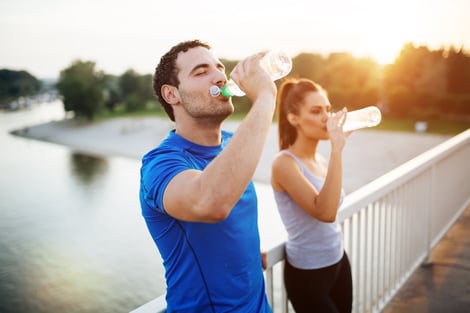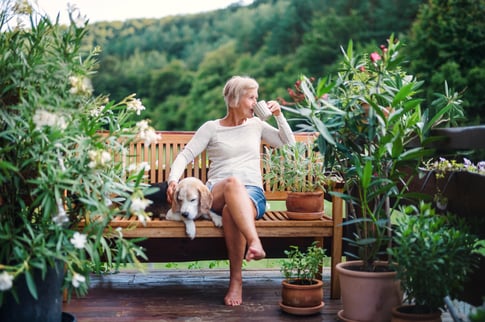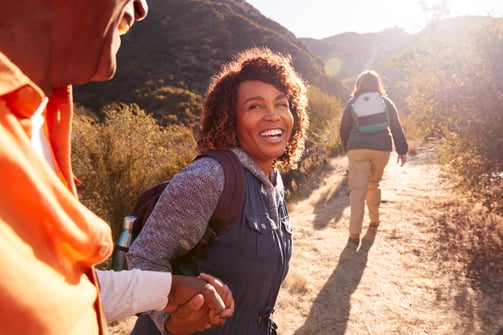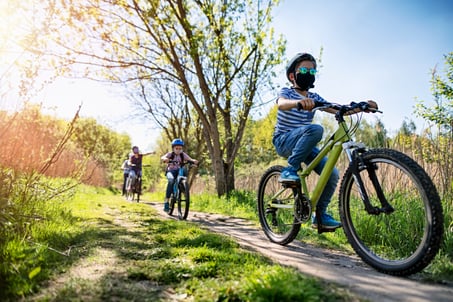 With the warmer summer months, it's the most prominent time when dehydration can become a big health issue and roadblock, especially if you are exercising outdoors. The heat and humidity can make it difficult to maintain a healthy balance of fluids in the body. That's why staying hydrated is not only important for your health but also for your fitness goals.
With the warmer summer months, it's the most prominent time when dehydration can become a big health issue and roadblock, especially if you are exercising outdoors. The heat and humidity can make it difficult to maintain a healthy balance of fluids in the body. That's why staying hydrated is not only important for your health but also for your fitness goals.
The Importance of Staying Hydrated
Water is essential for the proper functioning of our bodies. It regulates body temperature, helps transport nutrients, and removes waste. When we don't drink enough water, our bodies can become dehydrated, which can lead to serious health problems. Mild dehydration can cause headaches, fatigue, and dry skin, while severe dehydration can lead to heatstroke, seizures, and even death.
During the summer months, we are more likely to become dehydrated because we lose more water through sweating, and we may not be aware of how much water we are losing. Additionally, the heat can cause us to lose our appetite, which can make it harder to stay hydrated.
Exercising in the Heat and Hydration
Exercising in the heat can also have a significant impact on hydration levels. When we exercise, our bodies generate heat, and we sweat to cool down. This process can cause us to lose a lot of water, which can lead to dehydration if we don't replenish the lost fluids.
When we exercise in the heat, the risk of dehydration is even greater. This is because we lose more water through sweating, and the hot air can make it harder for our bodies to cool down. Additionally, if we are not used to exercising in the heat, our bodies may not be able to adjust to the higher temperatures, which can make us more susceptible to dehydration.
Staying Hydrated Through Water and Electrolytes
Drinking enough water is the most important thing you can do to stay hydrated. It's important to drink water before, during, and after exercise, especially if you're exercising in the heat. Aim to drink at least eight cups of water a day, and more if you're exercising or spending time outside.
Electrolyte replacement drinks like Gatorade, Powerade, Body Armor, or PRIME can also help you stay hydrated. When we sweat, we not only lose water, but also lose electrolytes like sodium, potassium, and magnesium. These electrolytes are essential for proper muscle and nerve function, and if we don't replace them, we can become dehydrated. You can use electrolyte replacement drinks to replenish these electrolytes.
5 Strategies to Stay Hydrated
Here are five strategies to stay hydrated during the summer months:
- Drink water before, during, and after exercise. You should aim to drink at least eight cups of water a day, and more if you're exercising or spending time outside.
- Use electrolyte replacement drinks. These drinks can help replenish electrolytes lost through sweating.
- Plan your exercise routine. Try to exercise early in the morning or later in the evening when temperatures are cooler. If you must exercise during the hottest part of the day, take frequent breaks and drink plenty of water.
- Wear appropriate clothing. Choose lightweight, breathable fabrics that allow sweat to evaporate, which can help you cool down more. Additionally, wearing a hat or visor can help protect your head from the sun, which can also help regulate your body temperature.
- Eat hydrating foods. Besides drinking water, you can also eat foods that are high in water content, such as watermelon, and cucumbers.
Staying hydrated is essential for maintaining good health and achieving your fitness goals, especially during the summer months. Drinking enough water, replenishing electrolytes, and planning your exercise routine can help you stay hydrated. And don't forget to wear appropriate clothing and eat hydrating foods! Remember, staying hydrated doesn't have to be a chore. It can be fun and easy to do. So, drink up, and enjoy the summer sun!

.jpg?width=486&name=winter%20exercise%20GettyImages-1048608792%20(1).jpg) When winter blows in and the days start to get shorter and colder, you can pull the blankets over your head and hibernate—or you can suit up and head outside for an outdoor winter adventure. Exercising in colder weather has distinct advantages over working out in warmer weather, so there is no reason to take a break when the temperatures drop. There are a number of advantages to working out in colder weather that most people disregard.
When winter blows in and the days start to get shorter and colder, you can pull the blankets over your head and hibernate—or you can suit up and head outside for an outdoor winter adventure. Exercising in colder weather has distinct advantages over working out in warmer weather, so there is no reason to take a break when the temperatures drop. There are a number of advantages to working out in colder weather that most people disregard.
 Every Sunday, I make a cup of coffee and head outside. I often just sit and listen to the sounds all around me. I take it all in. Even now I can feel the sun on my face, sense the gentle breeze, the sound and feel of the chair as it gently rocks back and forth. It is so easy for me to close my eyes and bring myself right back to that moment whenever I need to. There is something about being outdoors that feels so important to me. Every experience in my life seems more fulfilling while I am doing it outdoors.
Every Sunday, I make a cup of coffee and head outside. I often just sit and listen to the sounds all around me. I take it all in. Even now I can feel the sun on my face, sense the gentle breeze, the sound and feel of the chair as it gently rocks back and forth. It is so easy for me to close my eyes and bring myself right back to that moment whenever I need to. There is something about being outdoors that feels so important to me. Every experience in my life seems more fulfilling while I am doing it outdoors. Hiking is amazing in so many ways. It is great for physical activity, mental health and stress-relief, cardiovascular health, socialization and more. I’ve always loved the outdoors, but my love for hiking drastically increased when I went to Sedona, Arizona. The red rocks, the greenery, the breeze thousands of feet above sea level…breathtaking. No matter where you hike, you will experience many wonderful things along the way. If you have never hiked before or have only hiked a handful of times, follow these five steps for a great hiking experience:
Hiking is amazing in so many ways. It is great for physical activity, mental health and stress-relief, cardiovascular health, socialization and more. I’ve always loved the outdoors, but my love for hiking drastically increased when I went to Sedona, Arizona. The red rocks, the greenery, the breeze thousands of feet above sea level…breathtaking. No matter where you hike, you will experience many wonderful things along the way. If you have never hiked before or have only hiked a handful of times, follow these five steps for a great hiking experience:
 The winter months have come to a close and we have officially made it to April. It is the time of year when Spring has finally returned. The days are getting longer and warmer as we finally start getting back to a more normal environment. It’s time to take part in the many joys that Spring brings. During the winter months, we spend so much time indoors that by the time Spring rolls around our bodies are in desperate need of some Vitamin D. Make time to get outside each day to soak up that sun and warmth you have missed!
The winter months have come to a close and we have officially made it to April. It is the time of year when Spring has finally returned. The days are getting longer and warmer as we finally start getting back to a more normal environment. It’s time to take part in the many joys that Spring brings. During the winter months, we spend so much time indoors that by the time Spring rolls around our bodies are in desperate need of some Vitamin D. Make time to get outside each day to soak up that sun and warmth you have missed!.jpg?width=501&name=GettyImages-1138813719%20(1).jpg) If you’re looking to improve the overall happiness and well-being of your residents—and even yourself—try taking your offerings outside of the fitness center and straight into nature!
If you’re looking to improve the overall happiness and well-being of your residents—and even yourself—try taking your offerings outside of the fitness center and straight into nature!